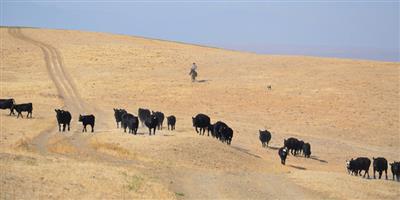by Derrell Peel, Oklahoma State University Extension Livestock Market Economist
Drought conditions have expanded rapidly in recent weeks across much of the western half of the U.S. Though many regions do not yet face imminent actions, it is not too early to develop drought plans.
The natural optimism of agricultural producers and the inevitable hope that rain will come “any day now” makes it tempting to postpone drought planning. It is better to have a plan that is ultimately not needed than wait until conditions force decisions at a time when alternatives are significantly reduced.
United States Drought Monitor Map: June 18, 2020

Drought-reduced pasture and/or hay production may lead to a need to reduce forage demands in cattle operations. Early cow culling may be a place to begin. Identify older or cows without a calf that are likely culling candidates and consider culling early. Cull cow prices are seasonally higher now than they will be later in the year or if significant regional culling occurs due to drought. Early pregnancy testing can help identify cows that could be culled early.
Make a priority list of how additional liquidation will be implemented if necessary. This should include older and open cows, growing replacement heifers, pregnant heifers, mature cows and so on. The list should include action triggers, which could be specific dates or based on forage conditions, that will initiate the next phase of liquidation. This plan may include consideration of relocating animals outside of the drought area and should evaluate the economic feasibility of relocating animals as well as the reality of locating and arranging a destination for animals.
Early weaning of suckling calves will reduce forage requirements of lactating cows and stretch limited forage reserves this summer and fall. These calves may be marketed early or moved into a drylot or semi-confinement backgrounding program.
The feasibility of implementing such a program must evaluate overall economic potential as well as the availability of facilities, labor and equipment to feed and care for calves in a growing program. In general, supplemental feed supplies are plentiful and inexpensive this year and may provide more flexibility for cattle producers to stretch forage supplies.
All of these cattle management alternatives depend on early and frequent assessments of forage reserves and production to make decisions in a timely manner. These assessments should include feed quality as well as quantity in order to plan for animal health and well-being.
If additional forage or supplemental feed needs are anticipated, early planning may avoid the higher feed prices that typically accompany drought situations. The tradeoff between buying feed or liquidating animals is always economically tricky and inevitably wrapped in emotion that can cloud sound decision-making.
It is okay to hope for better conditions as long as you plan for the worst. Failure to plan for deteriorating drought conditions will lead to easier decision-making…simply because fewer alternatives will be available. The result will be increased financial and emotional stress. A comprehensive drought plan that considers short and long run considerations will help guide decisions to reduce the stress for both the producer and the business.


